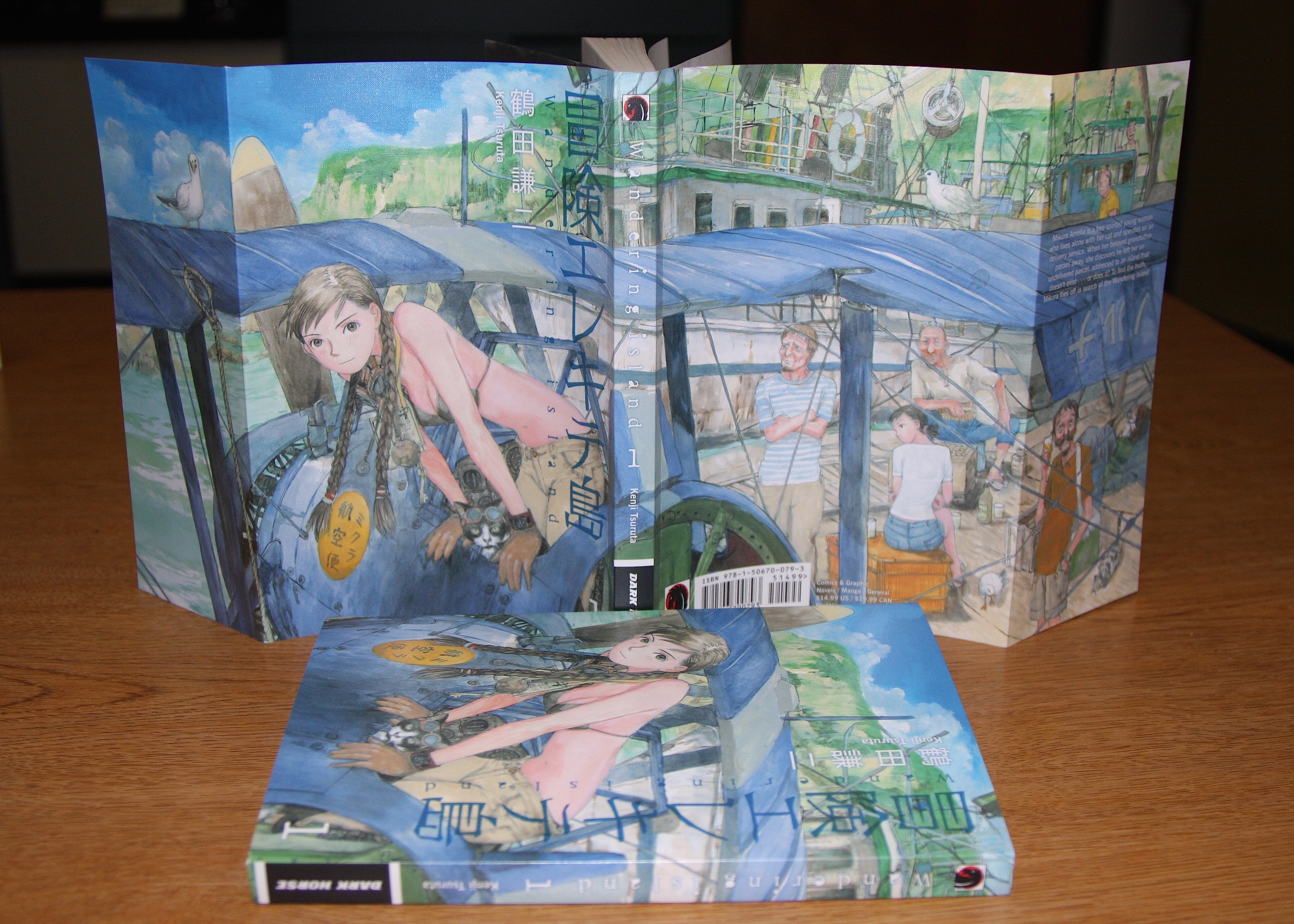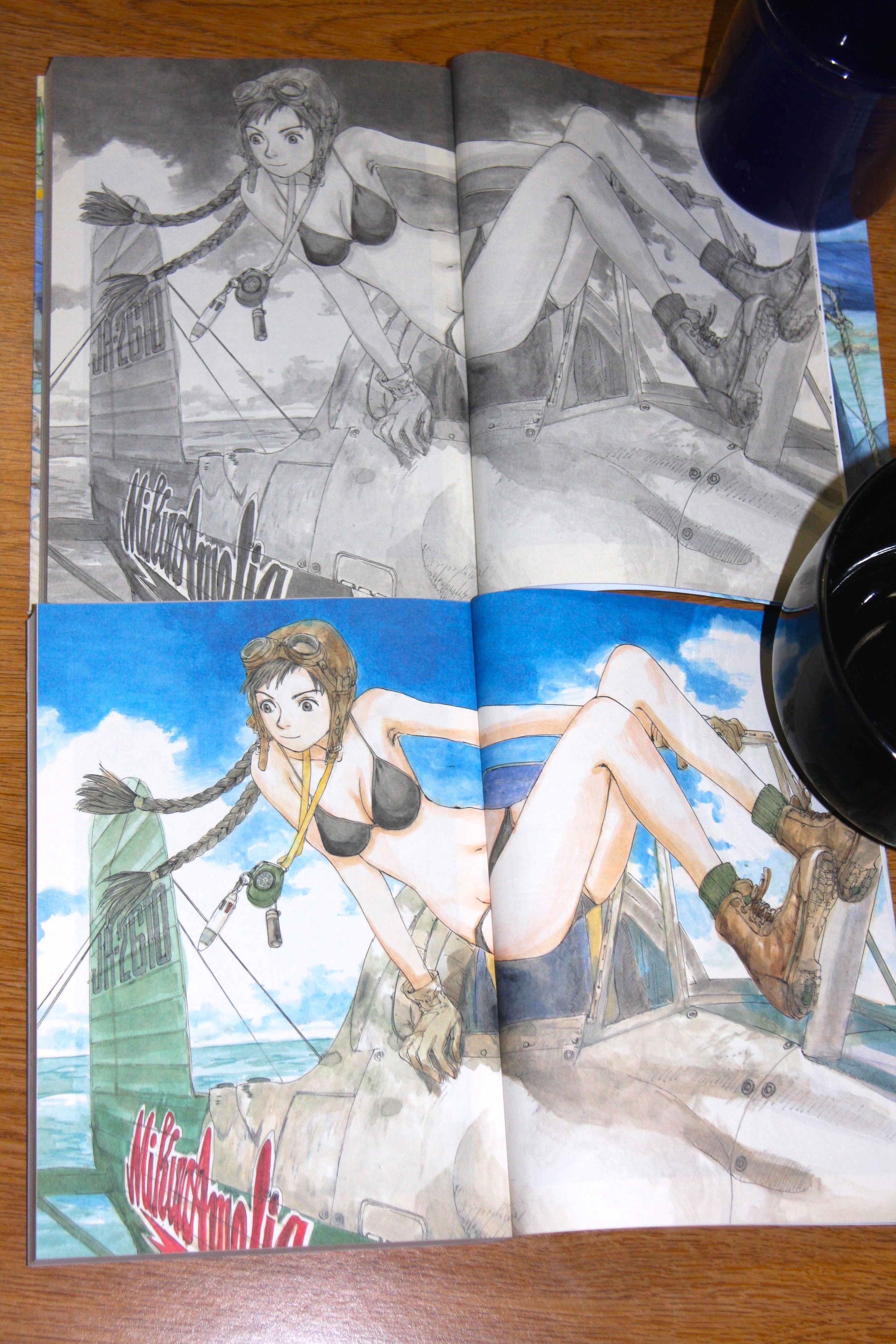Manga Monday: Wandering Island Vol. 1
07/18/2016 4:29pm
Kenji Tsuruta’s Wandering Island, which hit comic stores last week and should arrive in book stores next week, has already been getting positive attention—in fact, we were honored to see it’s one of three recent Dark Horse titles nominated in YALSA’s “Great Graphic Novels for Teens.”
[please insert image Wandering Island Cover.jpg here]
But this week we wanted to show you some things about Wandering Island you wouldn’t necessarily catch from just an image of the front cover. What you see above is what the full book cover looks like. The original Japanese edition, as is common with manga, was a paperback with a slipcover, and creator Kenji Tsuruta made a beautiful, widescreen-style wraparound painting that extended not only over the front and back covers and spine, but to the flaps of the slipcover as well. Dark Horse was determined to reproduce as much of the cover art as we could for the English edition, so, as you see, we added flaps to our regular cover as well (this style is called “French flaps”). Now let’s look inside…
[please insert image Wandering Island Interior.jpg here]
We also wanted our English edition to contain bonus features that weren’t in the Japanese original, and you can see them in this comparison of the Japanese original and the Dark Horse edition. Kenji Tsuruta painted several of the pages originally in full color; they were printed in color when Wandering Island was first serialized in Afternoon, its home magazine in Japan (Afternoon is also the home of classic titles such as Blade of the Immortal, Oh My Goddess!, and Gunsmith Cats, among many others). However, as you can see at the top of the image, the Japanese graphic novel of Wandering Island reproduced those color pages in greyscale. The Dark Horse version uses the original color versions of these pages.
If you’re not familiar with Kenji Tsuruta, he’s one of Japan’s most respected science fiction and fantasy illustrators, and Wandering Island is the first manga by him released in English since Spirit of Wonder in the 1990s. We’re hoping that a whole new generation of manga fans will discover the beauty, pace, and lyricism of his style.
—Carl Horn
Manga Editor
Kenji Tsuruta’s Wandering Island, which hit comic stores last week and should arrive in book stores next week, has already been getting positive attention—in fact, we were honored to see it’s one of three recent Dark Horse titles nominated in YALSA’s “Great Graphic Novels for Teens.”

But this week we wanted to show you some things about Wandering Island you wouldn’t necessarily catch from just an image of the front cover. What you see above is what the full book cover looks like. The original Japanese edition, as is common with manga, was a paperback with a slipcover, and creator Kenji Tsuruta made a beautiful, widescreen-style wraparound painting that extended not only over the front and back covers and spine, but to the flaps of the slipcover as well. Dark Horse was determined to reproduce as much of the cover art as we could for the English edition, so, as you see, we added flaps to our regular cover as well (this style is called “French flaps”). Now let’s look inside…

We also wanted our English edition to contain bonus features that weren’t in the Japanese original, and you can see them in this comparison of the Japanese original and the Dark Horse edition. Kenji Tsuruta painted several of the pages originally in full color; they were printed in color when Wandering Island was first serialized in Afternoon, its home magazine in Japan (Afternoon is also the home of classic titles such as Blade of the Immortal, Oh My Goddess!, and Gunsmith Cats, among many others). However, as you can see at the top of the image, the Japanese graphic novel of Wandering Island reproduced those color pages in greyscale. The Dark Horse version uses the original color versions of these pages.
If you’re not familiar with Kenji Tsuruta, he’s one of Japan’s most respected science fiction and fantasy illustrators, and Wandering Island is the first manga by him released in English since Spirit of Wonder in the 1990s. We’re hoping that a whole new generation of manga fans will discover the beauty, pace, and lyricism of his style.
—Carl Horn
Manga Editor



